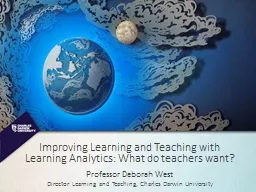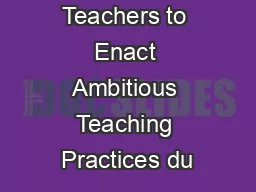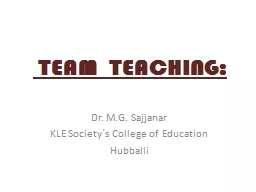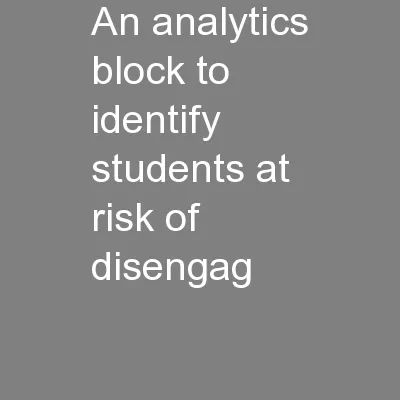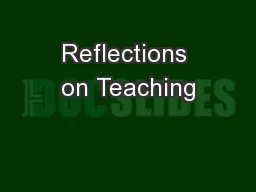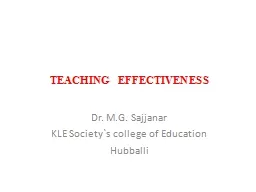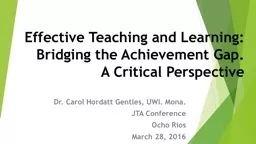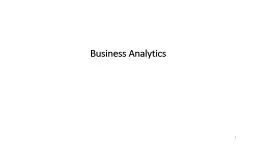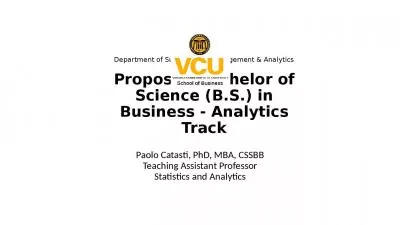PPT-Improving Learning and Teaching with Learning Analytics: What do teachers want?
Author : triclin | Published Date : 2020-06-19
Director Learning and Teaching Charles Darwin University Professor Deborah West Learning Analytics measurement collection analysis and reporting of data about learners
Presentation Embed Code
Download Presentation
Download Presentation The PPT/PDF document "Improving Learning and Teaching with Lea..." is the property of its rightful owner. Permission is granted to download and print the materials on this website for personal, non-commercial use only, and to display it on your personal computer provided you do not modify the materials and that you retain all copyright notices contained in the materials. By downloading content from our website, you accept the terms of this agreement.
Improving Learning and Teaching with Learning Analytics: What do teachers want?: Transcript
Download Rules Of Document
"Improving Learning and Teaching with Learning Analytics: What do teachers want?"The content belongs to its owner. You may download and print it for personal use, without modification, and keep all copyright notices. By downloading, you agree to these terms.
Related Documents

